Evert year we celebrate 4 Navratris (9 Nights for the Divine) namely Magh Gupt Navratri , Chaitra Navratri, Ashadh Gupt Navratri & Sharad Navratri. For a bvery long time the 2 Gupt Navratris namely Magh Gupt Navratri & Ashadh Gupt Navratri also known as Varahi Navratri where not known to most people and were celebrated primarily by Tantric & Sadhaks in secrecy.
What is Ashada Navratri?

Ashada Navratri is a period of nine days and nights dedicated to the nine forms of Shakti (Mother Goddess) in the Hindu month of Ashada (June – July). Ashada Navratri, also known as Gupt Navratri, is observed during the Ashada Shukla Paksha (waxing phase of the moon). Ashada Gupt Navratri is also referred to by several other names, such as Shakambari Navratri or Shakambari Utsav, Varahi Navratri, Gayatri Navratri, Bhadrakali Navratri, and Guhya Navratri in Himachal Pradesh, among others. It is celebrated mostly in North India. The nine days and nights of Gupt Navratri are considered highly powerful, meritorious, and beneficial for Shakti and Tantra Sadhanas and their accomplishments. As most of the tantric rituals and sadhanas are performed in secrecy, the Ashadha and the Magha Navratris are known as Gupt Navratri. Ashada Gupt Navratri is particularly important for all Upasakas, or worshippers, of Goddess Varahi. Varahi is one of the seven Matrikas mentioned in Devi Mahatmya.
Ashadha Gupt Navratri Dates
In 2025 Ashadh Gupt Navratri begins on 6th July & Ends on 15th July. Each day is dedicated to a particular Dus Mahavidya .
-
Navratri Day 1
26th June 2025, Thursday
Ghatasthapana, Maa Kali Puja -
Navratri Day 2
27th June 2025, Friday
Maa Tara Puja -
Navratri Day 3
28th June 2025, Saturday
Maa Shodashi or Lalita Tripura Sundari Puja -
Navratri Day 4
29th June 2025, Sunday
Maa Bhuvaneshwari Puja -
Navratri Day 5
30th June 2024, Monday
Maa Bhairavi Puja -
Navratri Day 6
1st July 2025, Tuesday
Maa Chinnamasta or Chinnamastika Puja -
Navratri Day 7
2nd July 2025, Wednesday
Maa Dhumavati Puja -
Navratri Day 8
3rd July 2025, Thursday
Maa Bagalamukhi Puja -
Navratri Day 9
4th July 2025, Friday
Durga Ashtami, Matangi Devi Puja -
Navratri Day 10
5th July 2025, Saturday
Maa Kamala Puja, Navratri Parana
History Behind Ashadha Gupt Navratri

During the ancient Vedic age, Gupt Navratri was known only to a few accomplished Sadhaks or sages. Gupt Navratri holds special importance for Tantriks and Sadhaks. It is believed that performing sadhana of Goddess Durga and the Dus Mahavidya Goddesses during this period will bestow their powers to accomplish one's desires. Hence, Gupt Navratri is mostly popular for Tantrik sadhana and pujas.
Significance Of Ashadha Gupt Navratri

According to the Devi Bhagwat, Navratri occurs four times a year. Just as the nine forms of the Goddess are worshipped during Chaitra and Sharad Navratri, during Gupt Navratri the worship of the Dus Mahavidya Goddesses is considered highly meritorious. During Gupt Navratri, devotees and seekers worship Maa Kali, Tara Devi, Tripura Sundari, Bhuvaneshwari, Mata Chhinmasta, Tripura Bhairavi, Maa Dhumavati, Maa Baglamukhi, Matangi, and Kamala Devi. The nine days and nights of Gupt Navratri are considered highly powerful and beneficial for Shakti and Tantra Sadhanas and accomplishments. This period holds special significance, especially for people associated with Tantric activities and those engaged in Shakti Sadhana, Bhairav Sadhana, Mahakal Sadhana, among others. The nine days and nights of Ashadha Gupt Navratri are dedicated to the worship of various forms of Shakti. During this period, devotees chant mantras dedicated to Goddess Durga to invoke Her divine blessings. Reciting religious scriptures like the ‘Durga Saptshati,’ ‘Devi Mahatmya,’ and ‘ Shrimad-Devi Bhagwat ’ is considered very auspicious.
Ashadha Gupt Navratri Vrat Katha

Once there was a Prince of Kosala named Sudarshan who fled to the forest with his mother to save themselves from a royal conspiracy and mutiny. In the forest, Sudarshan heard a sound and, being a young boy, playfully kept imitating it. The sound he was repeating was the word ‘Kleem’, which is the powerful Bija Mantra of Maa Durga . As it was the time of Gupt Navratri, Maa Durga was pleased with him and blessed him to win the throne, rule the kingdom, and achieve name, fame, and prosperity.
Why Ashada Gupt Navratri Is Observed?

Legends narrate that once, when Rishi Shrungi was advising devotees under a Peepal tree, a woman from the crowd told the Rishi that she could not receive the blessing of Maa Durga because of the bad activities of her husband. Her husband was indulging in all kinds of immoral activities and forced her to participate in them. Due to this, the woman was unable to perform any kind of vrat, puja, or rituals. She wanted to take refuge at the feet of Goddess Durga but was unable to do so because of her husband's actions. She asked Rishi Shrungi to help her find the blessings of Maa Durga.
Rishi Shrungi then told the woman that people know about the Chaitra (March – April) and Sharad (September – October) Navratri. But apart from these, there are two secret Navratris in a year during which the ten Mahavidya (Dasa Mahavidya) forms of the Mother Goddess are invoked. Rishi Shrungi advised the woman to worship Maa Durga during Gupt Navratri to receive Her blessings. The woman performed intense penance during Gupt Navratri, due to which she achieved peace and prosperity. Her husband abandoned his wanton life and became a responsible family man. All this happened due to the blessings of Maa Durga, whom she worshipped during Gupt Navratri.
Why is Ashadh Navratri also known as Gupt Navratri? Gupt Navratri Meaning

Gupt translates to “secret” in Sanskrit. In olden times very few people knew about Gupt Navratris which occurred twice in a year during the months of Magh & Ashadh. These festivals & their rituals were primarily performed by Tantrics & very devoted Sadhaks to attain spiritual powers. It is believed that this festival should be celebrated in secrecy to receive blessing from the Divine Mother. Unlike Sharad & Chaitra Navratri, during Gupt Navratri one should not celebrate publicly, you should not invite people at home for puja, even photographs of the rituals performed at home should not be shared online. Some people believe that you should not even talk about this festival. These are reasons why Magh & Ashadh Navratris are also known as Gupt Navratri.
Why Gupt Navratri also known as Varahi Gupt Navratri?

During Ashadha Gupt Navratri, devotees of Goddess Varahi Devi worship Her for material prosperity, spiritual growth, good health, and protection.
Goddess Varahi Devi is one of the Saptamatrikas. She is the consort of the Varaha avatar of Lord Vishnu. Goddess Varahi is a warrior goddess who assisted Maa Durga during her battle with the demons Shumbha, Nishumbha, and their armies. Her face resembles that of a boar. She blesses Her devotees with victory over enemies, progress, success, and prosperity. Goddess Varahi is also worshipped for courage, fearlessness, and control over all negative vices.
Chanting the below-mentioned Varahi Devi Mantras during Ashadha Gupt Navratri is very meritorious and beneficial.
Om Varahi Sarvato Mam Raksa raksa Durge Hum Phat Swaha ||
Om Mahishadhwajayai Vidmahe
Dandahastayai Dhimahi
Tanno Varahi Prachodayat ||
The period of Ashadha Gupt Navratri is considered the most appropriate time to seek the grace of the Mother Goddess for a specific benefit or to accomplish a particular task and fulfill desires. During these auspicious days, extensive prayers are offered to earnestly request Goddess Durga for Her blessings. Reading the Durga Saptashati or Durga Saptashloki on all nine days is considered very beneficial and meritorious.

Click Here to Book Ashadha Varahi Navratri Mahapuja
What are Varahi Navratri Benefits?
Celebrating Varahi Navratri brings numerous benefits, including good luck, prosperity, and protection. It is a time for spiritual growth and purification, with devotees often fasting and performing special rituals. Here are some key benefits of participating in Varahi Navratri:
- The festival is believed to attract positive energy and fortune.
- Devotees seek the goddess Varahi's protection from negative influences.
- It offers a chance for personal spiritual development and cleansing.
- The rituals and prayers help participants deepen their connection with the divine.
- Celebrating together fosters a sense of unity and belonging among participants.
- The festivities provide a break from daily stresses and a time for reflection.
- The festival symbolizes and celebrates the triumph of good over evil.
Overall, Varahi Navratri is a meaningful and enriching experience for those who observe it.
Rules To Follow During Gupt Navratri | Dos & Don’ts During Ashadha Gupt Navratri

A person doing Sadhana and puja during Gupt Navratri should follow certain rules. Here are the dos and don’ts during Ashad Navratri, based on oral tradition followed in many regions:
- Do not celebrate Ashadh Gupt Navratri publicly, do not invite other people except immediate family at home for puja
- Refrain from sharing images or videos of the puja online.
- Devotees performing Puja and Vrat during Gupt Navratri should not wear or use any items made of leather.
- Anger, jealousy, lust, and desire should be completely avoided.
- Hair should not be cut during this period.
- Nails should not be cut during this period.
- Mundan Sanskar of children should not be performed. It is better if family members avoid cutting hair during this period.
- Black-colored clothes should not be worn during this period.
- Devotees should not sleep during the daytime.
- Small children, pregnant women, elderly people, and those diagnosed with serious illnesses should not strictly perform the vrat
- Do not consume alcohol during this period.
Ashadha Gupt Navratri Puja Vidhi (Prayer Ritual) | Ashadha Gupt Navratri Sadhana
---Ashadha-Gupt-Navratri-sadhana.jpg)
During Gupt Navratri, devotees of Devi observe strict fasting and practice sadhana, following austere rules meticulously to attain rare occult powers. They eat only pure, Satvik food once a day. If, due to health reasons, devotees cannot keep a strict fast, partial fasting is allowed. Eating ‘Phalahaar’ is also permitted. Prayers can be performed at dawn and dusk. Those seeking to attain siddhi and moksha should meditate, sitting on an asana made of Kusha or Durva grass mat, and light a diya or an oil lamp using cow ghee. A single wick or nine wicks should be lit. Offer the Gudhal flower (red-colored Hibiscus flower) to the Goddess. Prayers and mantras of the Goddess should be chanted using a mala of Red Sandalwood or Rudraksha beads. Pray to Goddess Varahi and chant Varahi Mantras. Reading Durga Saptashati, Durga Saptashloki, ‘Devi Mahatmya,’ and ‘Shrimad-Devi Bhagawad’ bestows immense blessings.
During Gupt Navratri, worship is conducted like any other Navratri. Taking the Sankalp of fasting for nine days, devotees worship Goddess Durga every morning and evening after performing Ghatasthapana on Pratipada. On the day of Ashtami or Navami, devotees observe a fast along with the worship of young girls. However, in Gupt Navratri, these rituals should not be discussed or disclosed to anyone.
Permitted Fasting foods for Upvas

During the fast, devotees can eat the following foods: all fruits, berries, nuts, milk and milk products (buttermilk, yogurt, paneer, unsalted butter, ghee), sweet potatoes, potatoes, sabudana (sago), kuttu aata (buckwheat flour), peanuts, dry fruits, singhara aata (water chestnut flour), makhana (fox nut), yams (suran and ratalu), samak rice (barnyard millet), rajgira (amaranth), lauki (bottle gourd), cucumber, pumpkin, raw banana, ginger, tomato, carrot, aaluki (colocasia), cumin seeds, black pepper, red chili, dried raw mango powder, mishri (rock sugar), and sendha namak (pink salt).
What makes Gupt Navratri different?
Devotees interested in Tantra Vidya observe a fast during Gupt Navratri to seek the blessings of the Goddess for fulfilling their deepest desires. They also honor the Goddess by learning about the ten Mahavidyas associated with Tantra Shakti.
Devotees pray to the ten Mahavidyas, who are:
- Kali - the one who swallows time
- Tara - the protector
- Tripura Sundari - the most beautiful in the three worlds
- Bhuvaneshwari - the Goddess of the world
- Bhairavi - the fiercest one
- Chinnamasta - the one who cut her own head
- Dhumvati - the elderly one or widow
- Bagalamukhi - the one who numbs the enemy
- Matangi - the Goddess of music and speech
- Kamalatmika - the graceful one
The rituals include reciting the Chandi Path and the Durga Chalisa. However, the ten Mahavidyas are primarily worshipped during the Magh and Ashadha Navratris, which are celebrated mainly by Sadhaks (seekers) of Tantra Sadhana.
Meditating During Ashadha Gupt Navratri

Meditating during Ashadha Gupt Navratri improves focus and aids in the manifestation of material gains. This sacred period deepens one's spiritual connection, bringing inner peace and mental clarity, which are essential for better concentration in daily life. The powerful energies invoked during Navratri are particularly effective for manifesting material desires, making better decisions, and increasing productivity. By focusing intentions and visualizing goals, one can attract opportunities and resources needed for material success. The positive energy generated through meditation creates an environment conducive to growth and prosperity, making Ashadha Gupt Navratri an ideal time for both spiritual and material progress.
Dus Mahavidya Goddesses Worship During Ashadha Gupt Navratri

Ashadha Gupt Navratri is also the best time to worship the Dus Mahavidya Goddesses. Dus Mahavidya refers to the ten manifestations or aspects of Adi Shakti or Maa Parvati. 'Dus' means ten and 'Mahavidya' means Great Wisdom, so Dus Mahavidya means the Ten Great Wisdom Goddesses. These ten Goddesses hold significant importance in Shaktism. Shakti Sadhaks, or followers of Shaktism, worship the ten Goddesses as a group or a single Goddess from the group for various powers, siddhis, and other benefits.
Details about the Dus Mahavidya are mentioned in Srimad Devi Bhagavatam, or the Devi Purana. The ten Mahavidya are Goddess Kali, Tara, Tripura Sundari (or Shodasi-Sri Vidya), Bhuvaneshvari, Chinnamasta, Bhairavi, Dhumavati, Bagalamukhi, Matangi, and Kamala. Each of the Dus Mahavidya has its own mantra, legend, and more. Navratri is considered the best time to worship the Dus Mahavidya along with the nine forms of Maa Durga.
Story About Origin of Dus Mahavidya

According to the Mahabhagvata Purana, once Lord Shiva disagreed with Maa Sati's insistence to visit her father Daksh’s Yajna and started walking away. Feeling offended, Maa Sati took the manifestations of 10 different Goddesses and blocked all ten directions to stop Lord Shiva. Another legend recounts that during playful banter between Lord Shiva and Maa Parvati, things went a bit too far, and Maa Parvati took on Her Kali manifestation, the first of the Mahavidya. Upon seeing this, Lord Shiva attempted to leave, but Maa Parvati took nine more manifestations, blocking all ten directions and preventing Lord Shiva from leaving.
Significance Of Dus Mahavidya Goddesses
Dus Mahavidya are also related to Vedic astrology and are worshipped to pacify the malefic effects of the nine planets. Maa Kali is worshipped for Saturn, Tara for Jupiter, Tripura Sundari (or Shodasi-Sri Vidya) for Mercury, Bhuvaneshvari for the Moon, Chinnamasta for Rahu, Bhairavi for Lagna, Dhumavati for Ketu, Bagalamukhi for Mars, Matangi for the Sun, and Kamala for Venus. According to the Guhyatiguyha-tantra, the Dus Mahavidya are also related to the ten incarnations of Lord Vishnu, as They are the powers behind the ten incarnations of Lord Vishnu.
Mantras For Dus Mahavidya Goddesses
Goddess Kali

Kali is the first among the ten Mahavidyas. She is worshipped for the destruction of disease, for the destruction of enemies, for protection from evil spirits and evil planets, for destroying all fears and for prosperity.
Kali Mantra - Om Kreem Kalike Svaha॥
Avatar - Krishna
Goddess Tara

The second Dus Mahavidya Goddess is Goddess Tara, also known as Tarini. She is worshipped for enhancing intellect and achieving a sudden gain of wealth and prosperity.
Tara Mantra – Om Hreem Treem Hum Phat॥
Avatar - Matsya
Goddess Shodashi

Worshipping Goddess Shodashi leads to the attainment of salvation along with material pleasures. She also blesses Her devotees with beauty, good fortune and other worldly pleasures.
Shodashi Mantra - Ka E I La Hreem Ha Sa Ka Ha La Hreem
Avatar - Parashurama
Goddess Bhuvaneshwari

Maa Bhuvaneshwari is the Goddess Who when pleased fulfills any and all wishes of Her devotees in the blink of an eye. She is worshiped for name, fame, growth and prosperity.
Bhuvaneshwari Mantra - Om Hreem Shreem Kleem Aim Saumh Kreem
Avatar - Vamana
Goddess Bhairavi

She is the fierce warrior Goddess. She is worshipped for victory, protection, power and success.
Bhairavi Mantra - Om Hreem Bhairavi Kalaum Hreem Svaha॥
Avatar - Balram
Goddess Chinnamasta

Worship of Goddess Chinnamasta Devi helps to overcome self-pity, fears and attain freedom. Maa Chhinnamasta is worshiped to defeat enemies, for success in career, for promotion in job and for Kundali Jagran.
Chinnamasta Mantra - Shreem Kleem Hreem Aim Vajra Vairochneye
Avatar - Narasimha
Goddess Dhumavati

She is the Widow Goddess or the Goddess of death. She is worshipped for relief from all miseries and misfortunes and for intellect, wisdom and truth.
Dhumavati Mantra - Om Dhoom Dhoom Dhumavati Swaha
Avatar - Varaha
Goddess Bagalamukhi

She is the Goddess Who paralyzes one’s enemies. She is worshipped for victory over enemies and for protection.
Bagalamukhi Mantra - Om Hreem Baglamukhi Sarv Dushtanaam Vaacham Mukham Padam Stambhya Jivhaam Keelya, Buddhim Vinaashya Hlreem Aum Swaaha
Avatar - Kurma
Goddess Matangi

She is known as the ‘Tantric Saraswati’. She is worshipped to gain deep unknown knowledge and also for wisdom and growth.
Matangi Mantra - Om Hreem Kleem Hoom Matangyey Hoom Phat Swaha
Avatar - Ram
Goddess Kamala

She is the Lotus Goddess, also known as the ‘Tantric Lakshmi’. She is worshipped for wealth, growth and prosperity.
Kamala Mantra - Aim Shreem Hreem Kleem
Avatar - Kalki
Other Most Powerful Mantras To Chant During Ashadha Gupt Navratri
During Gupt Navratri, specific mantras are chanted to gain specific benefits. Some powerful mantras dedicated to Goddess Durga to be chanted during Ashadha Gupt Navratri are:
Sarva Mangala Mangalye Sive Sarvartha Sadhike Saranye Trayambike Gauri Narayani Namostute ||
Ya Devi SarvaBhuteshu, Shanti RupenaSangsthitaya Devi SarvaBhuteshu, Shakti RupenaSangsthitaya Devi SarvaBhuteshu, MatriRupenaSangsthitayaa Devi SarvaBhuteshu, BuddhiRupenaSangsthitanamastasyai, Namastasyai, Namastasyai, NamoNamaha ||
Om Du DurgaiNamah ||
Om Hreem Klein ChamundayaiViche ||
Om ShriHeeShrimDurgaDevaiNamah ||
Some other Durga Mantras from Durga Saphtshati:
सर्वाबाधाप्रशमनं त्रैलोक्यस्याखिलेश्वरि।
एवमेव त्वया कार्यमस्मद्वैरिविनासनम्।।
शूलेन पाहि नो देवि पाहि खड्गेन चाम्बिके।
घण्टास्वनेन न: पाहि चापज्यानि:स्वनेन च।।
देवि प्रपन्नार्तिहरे प्रसीद प्रसीद मातर्जगतोखिलस्य।
प्रसीद विश्वेश्वरी पाहि विश्वं त्वमीश्वरी देवि चराचरस्।।
दुर्गे स्मृता हरसि भीतिमशेषजन्तो: स्वस्थै: स्मृता मतिमतीव शुभां ददासि।
दारिद्रयदु:खभयहारिणि का त्वदन्या सर्वोपकारकरणाय सदाद्र्रचिता।।
पत्नीं मनोरमां देहि मनोवृत्तानुसारिणीम्।
तारिणीं दुर्गसंसारसागरस्य कुलोद्भवाम।।
यस्या: प्रभावमतुलं भगवाननन्तो ब्रह्मा हरश्च न हि वक्तुमलं बलं च।
सा चण्डिकाखिलजगत्परिपालनाय नाशाय चाशुभभयस्य मतिं करोतु।।
सर्वस्य बुद्धिरूपेण जनस्य हदि संस्थिते।
स्वर्गापर्वदे देवि नारायणि नमोस्तु ते।।
दुर्गे देवि नमस्तुभ्यं सर्वकामार्थसाधिके।
मम सिद्धिमसिद्धिं वा स्वप्ने सर्वं प्रदर्शय।।
यस्या: प्रभावमतुलं भगवाननन्तो ब्रह्मा हरश्च न हि वक्तुमलं बलं च।
सा चण्डिकाखिलजगत्परिपालनाय नाशाय चाशुभभयस्य मतिं करोतु।।
रोगानशेषानपहंसि तुष्टा रुष्टा तु कामान् सकलानभीष्टान् ।
त्वामाश्रितानां न विपन्नराणां त्वामाश्रिता ह्याश्रयतां प्रयान्ति।
FAQs
What are some fasting rules on Ashadha gupt Navratri?
During Ashadha Gupt Navratri, devotees should avoid eating grains and instead consume fruits, dairy products, and simple Satvik food. Onions, garlic, and non-vegetarian items should be strictly avoided. Drinking plenty of water is encouraged, while alcohol and tobacco are prohibited. Devotees may eat nuts, milk, and root vegetables like potatoes and sweet potatoes. Meals are typically light and simple, focusing on purity and cleanliness.
What to offer to devis as a bhog on Ashadha gupt Navratri?
During Ashadha Gupt Navratri, devotees offer various bhogs (food offerings) to the different forms of Goddess Durga. Here are some common offerings for each day:
- First Day (Pratipada): On the first day of Gupt Navratri, offer ghee to the Devi and donate it. This helps in relieving physical ailments and promotes good health.
- Second Day (Dwitiya): On the second day, offer sugar to the Devi and donate it. This practice is believed to grant longevity.
- Third Day (Tritiya): On the third day, offer milk to the Goddess and donate it. This act is said to free one from all kinds of sorrows.
- Fourth Day (Chaturthi): On the fourth day, offer and donate malpua (a type of sweet). This is done to remove all obstacles and difficulties.
- Fifth Day (Panchami): On the fifth day, offer bananas to the Goddess and then donate them. Offering bananas is believed to bring peace and happiness to the family.
- Sixth Day (Shashti): On the sixth day, offer honey to the Goddess. Offering honey is said to resolve financial problems.
- Seventh Day (Saptami): On the seventh day, offer jaggery-based items to the Goddess and donate them. This practice is believed to alleviate poverty.
- Eighth Day (Ashtami): On the eighth day, offer coconuts to the Goddess and then donate them. This is believed to bring prosperity and happiness.
- Ninth Day (Navami): On the ninth day, offer various grains to the Goddess and donate them to the poor. This practice is believed to bring all kinds of happiness and fulfillment in life.
- Tenth Day (Dashami): On the 10th Day you can offer Halwa made of Navdhanya to the Devi which can then be donated to the poor after the puja. This will bless you with material and spiritual abundance.
These offerings are made with devotion, and it is believed that the Goddess blesses devotees with health, prosperity, and spiritual growth.

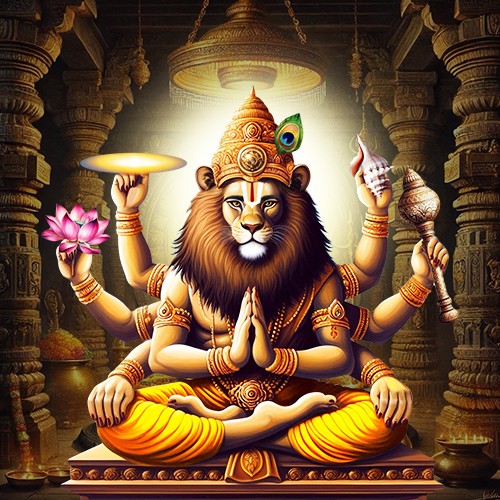
-in-Astrology.jpg)




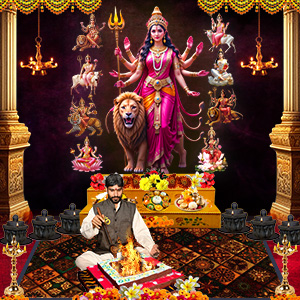
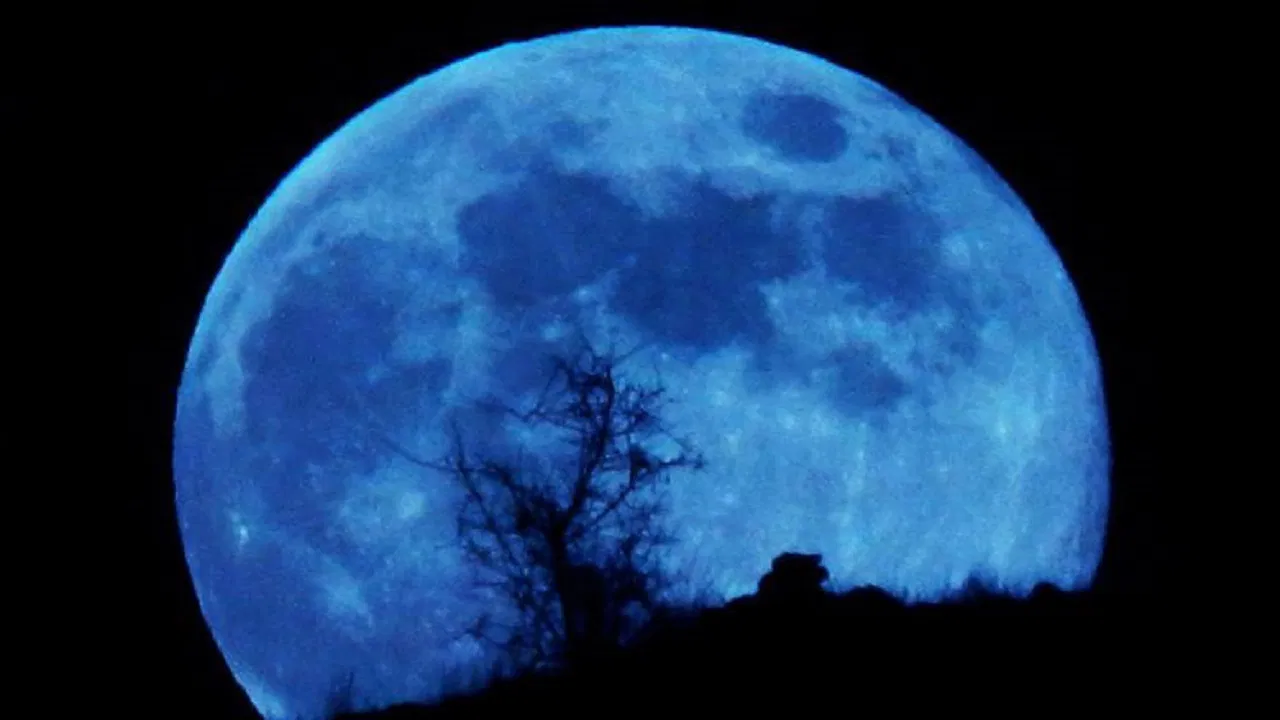
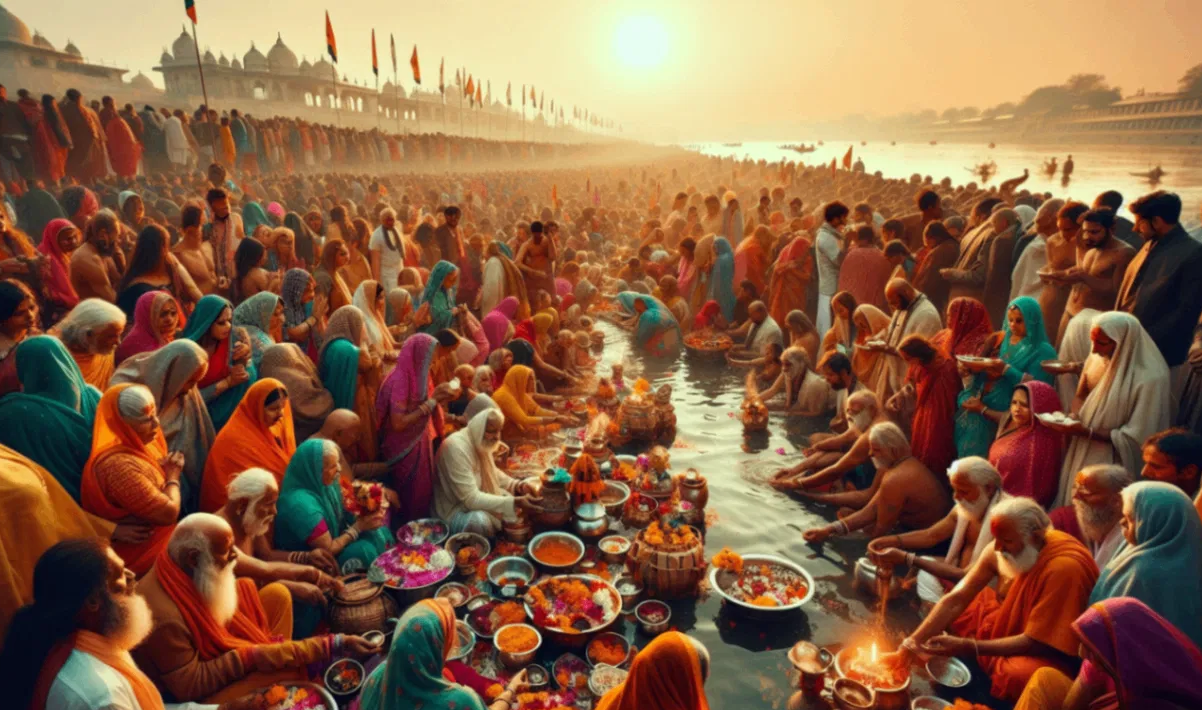
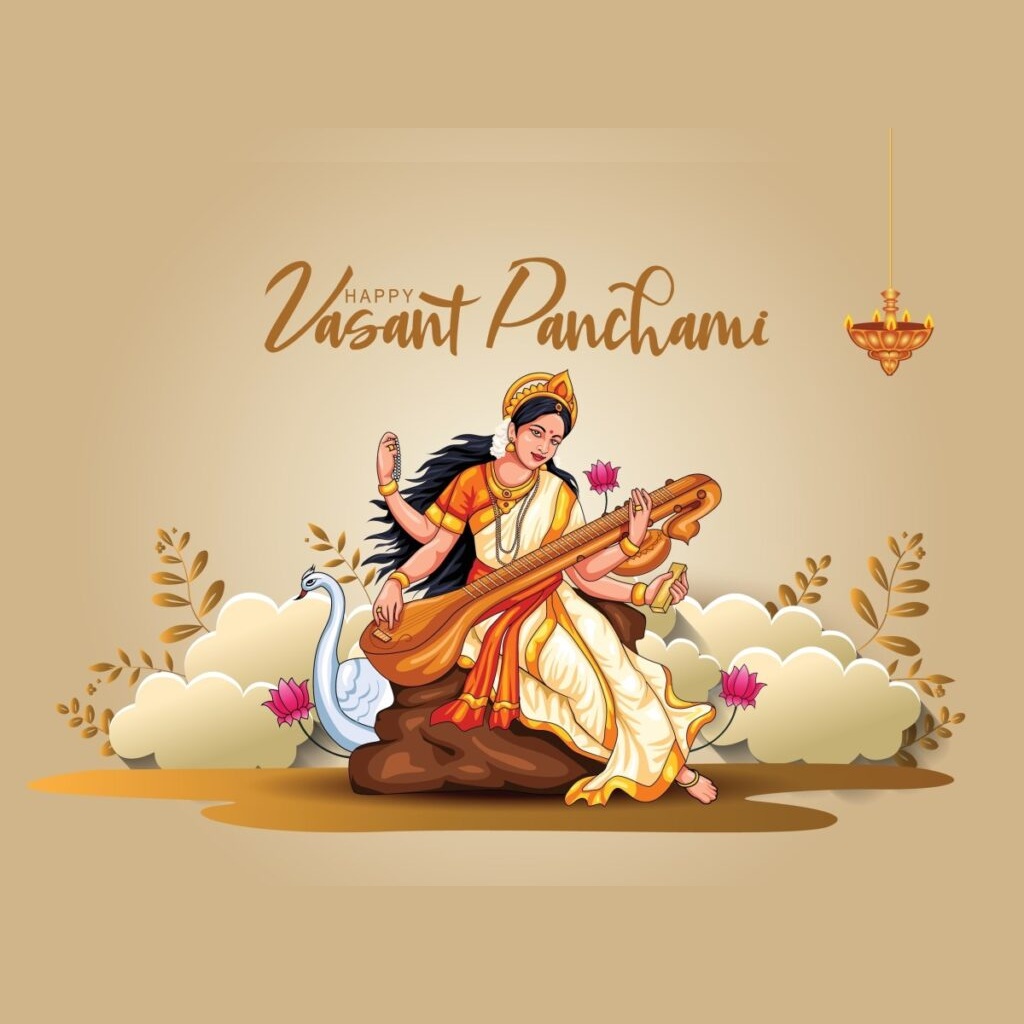
Comments 0
Leave your thought here